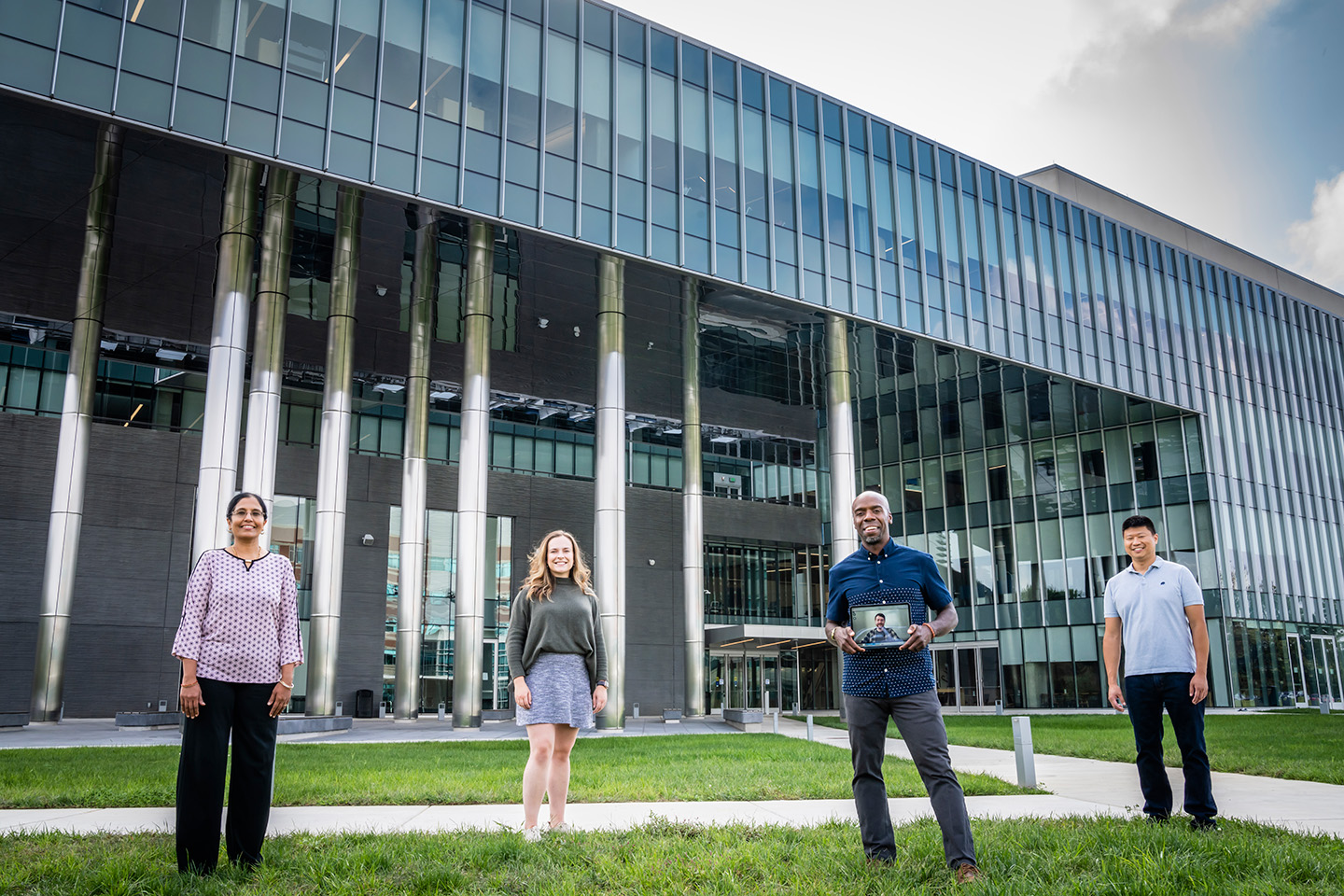News
With Project Wonder, Johns Hopkins Medicine and Johns Hopkins APL Seek to Generate Discoveries From Data
Wonder is, by its very nature, impossible to quantify. But, convinced of the fundamental role of wonder in the scientific enterprise, a team from Johns Hopkins Medicine in Baltimore and the Johns Hopkins Applied Physics Laboratory (APL) in Laurel, Maryland, is leveraging the power of data to foster wonder, inspire novel insights and push the frontiers of precision medicine.
Project Wonder is a collaboration between clinicians at the Johns Hopkins Myositis Precision Medicine Center of Excellence (PMCoE), led by the center’s physician lead and director of research operations Christopher Mecoli, and a team of data scientists, human factors and software engineers at APL. Initiated by Antony Rosen, vice dean for research and professor of medicine at the Johns Hopkins University School of Medicine in Baltimore, the project was part of the Precision Medicine Analytics Platform (PMAP), a multiyear project across the Johns Hopkins system focused on accelerating precision medicine for clinicians and researchers by building a tool to facilitate discovery from data. The insights they were able to glean within minutes using the Wonder Engine represented three to four years of work on the part of the global myositis research community, demonstrating the tool’s promise in facilitating future research into myositis and other diseases.
The Wonder Engine has proven capable of aggregating and organizing vast quantities of clinical and research data, enabling clinicians to explore their data, identify trends, test intuitions and formulate and validate novel hypotheses — in short, to experience the moments of wonder that lead to breakthrough discoveries.
“The idea behind the Wonder Engine is that we can harness the power of data science to generate moments of wonder for clinicians, moments that show them something unique or interesting about their patient data,” said Suma Subbarao, the project manager of PMAP at APL. “That could be a confirmation of something they’ve suspected from experience, or a completely new insight. The goal is to catalyze the creativity of clinicians with these analytics and visualization tools.”
The initial goal of Project Wonder was to use the Wonder Engine to validate a hypothesis — that there is a strong association of cancer with the onset of myositis, a rare inflammatory autoimmune disease — and to help discover new subgroups of patients using novel data science methods and visualization techniques.
Myositis can afflict multiple organ systems, including the lungs, joints, muscles and skin. The Johns Hopkins Myositis PMCoE has amassed a wealth of data from patient care and research pertaining to this disease, but the associated cancer risk is not well characterized. So, this was seen as a good starting point for Project Wonder, Subbarao said.
For instance, the highest incidence of cancer diagnosis occurs at the onset of myositis symptoms. However, it is not well understood which patients are at the highest risk. As a result, many patients are screened for cancer at myositis onset, at great expense and stress to them and their loved ones. Certain biomarkers and demographic factors are thought to influence cancer risk, but the associations are not well enough established to be able to differentiate and therefore screen fewer patients for cancer upon myositis diagnosis.
Using the Wonder Engine, clinicians at the Johns Hopkins Myositis PMCoE began by validating biomarkers that are known to predict cancer diagnosis in their patients, and within a few hours, associations that had previously taken years for the myositis research community to realize became apparent. Next, the team searched for novel patterns, challenging dogmas within the myositis-cancer field — such as the idea that younger patients cannot develop cancer.
Eventually, the team hopes to turn the Wonder Engine into a tool that can be used in the clinic, as well as for research — not just at Johns Hopkins, but nationally and globally.
“By reverse engineering the process of discovery in myositis, so to speak, we’ve shown that we can transform the way research is done by giving researchers the ability to explore data and make connections,” said Brant Chee, Project Wonder’s chief data scientist, who also teaches data science techniques to clinicians as a faculty member of the Johns Hopkins University School of Medicine. ”As we expand to partner with other centers of excellence at Johns Hopkins Medicine, we’ll continue to improve the Wonder Engine’s capability to accelerate human creativity with the power of data.”
The PMAP Project Wonder team at APL includes Subbarao, Chee, Hannah Cowley, Matt Chapman, Willie Stewart, Alan Ravitz, John Piorkowski and Teresa Colella.
